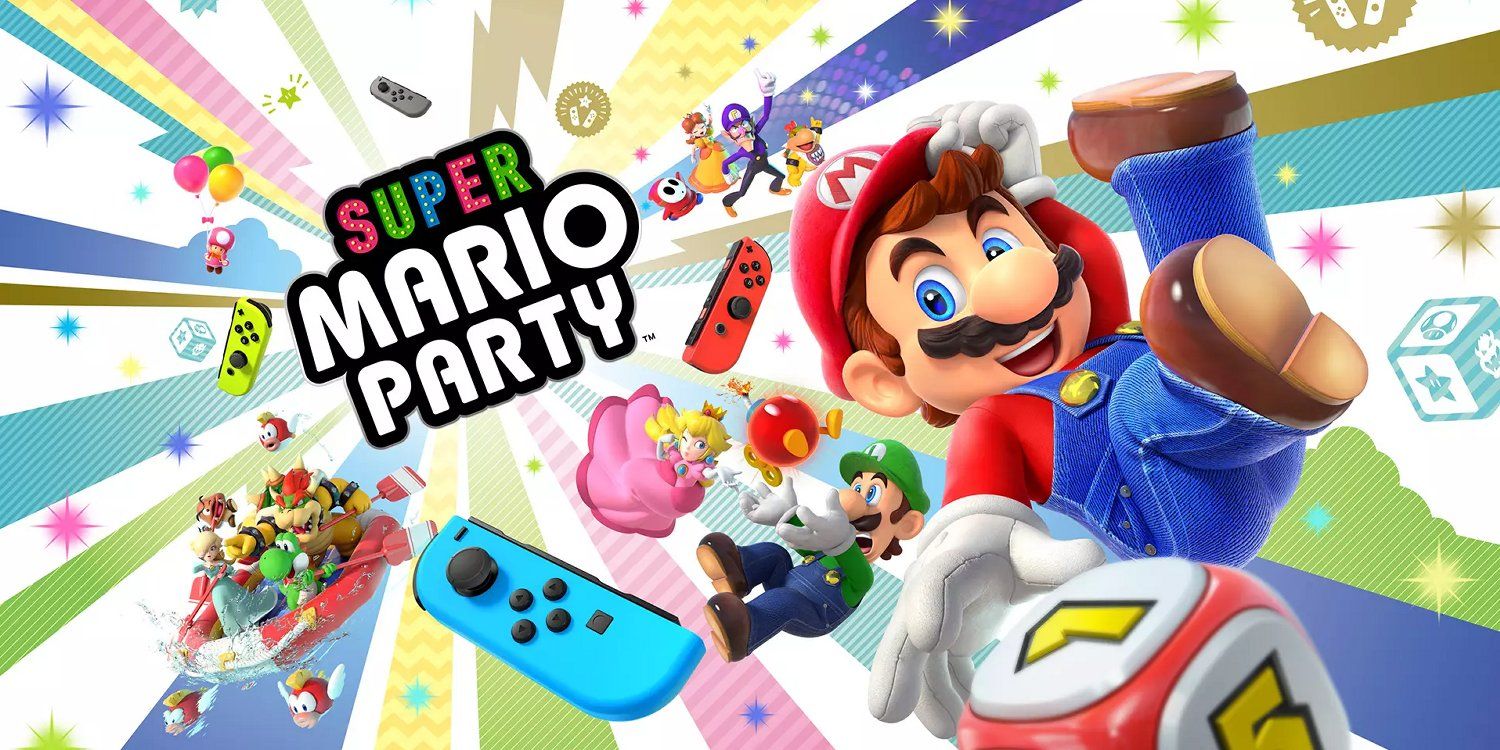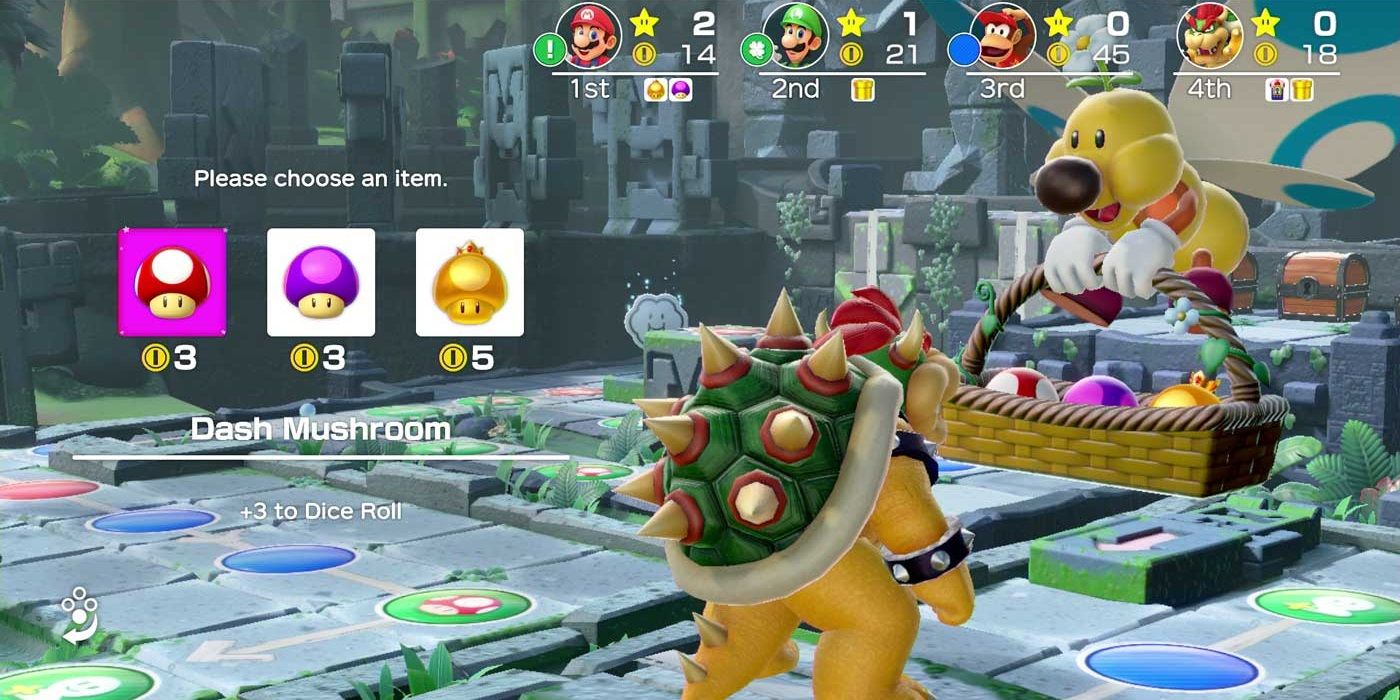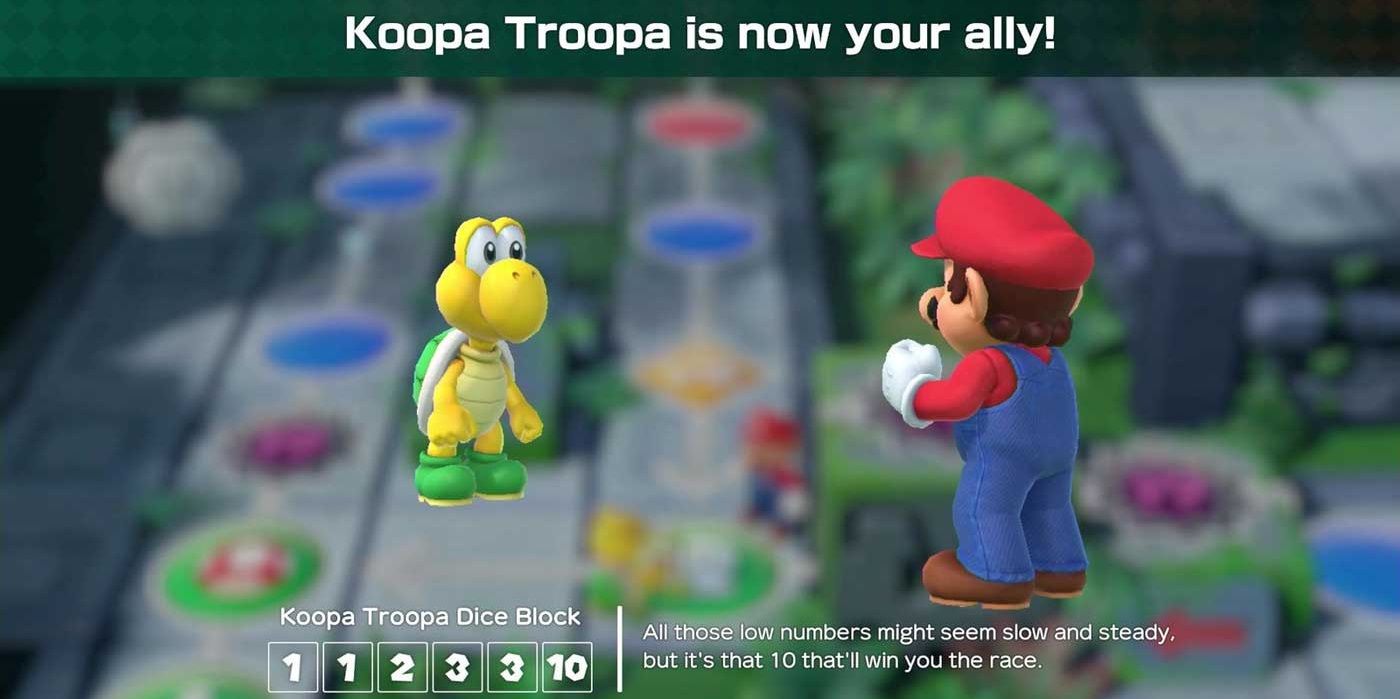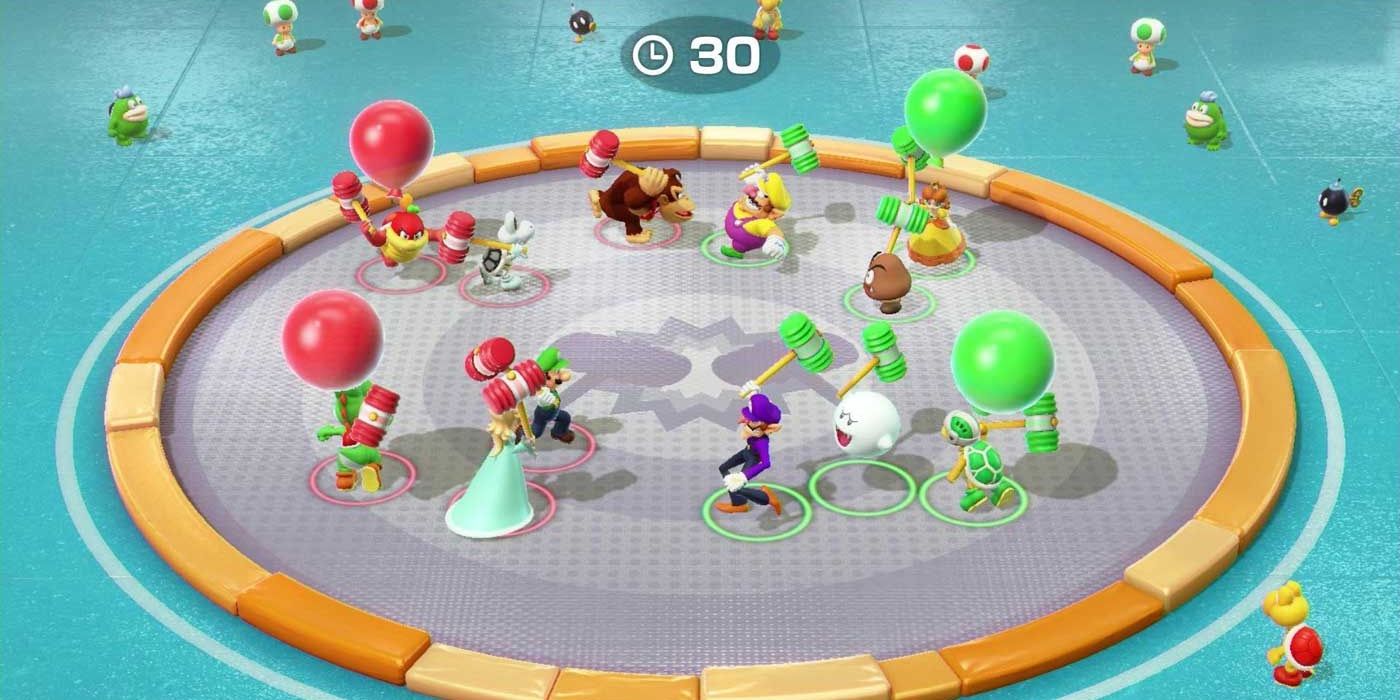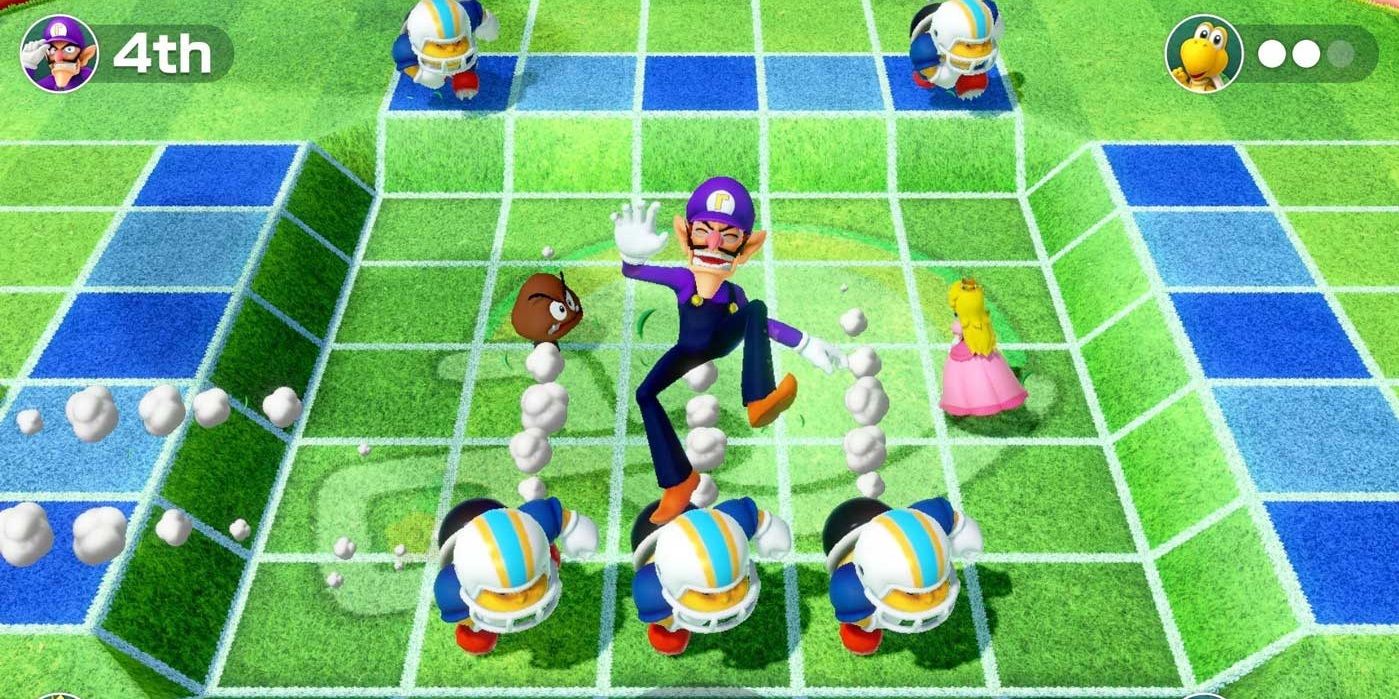Super Mario Party isn't just a return to the classic gameplay, bringing back the board game format and forgoing the controversial car. It's the best entry in the Mario Party franchise in years though admittedly, Nintendo hasn't set the bar very high. The last time there was a halfway decent Mario Party was back in 2007 with Mario Party 8 and to find a truly great addition you need to go even further back in time. Super Mario Party makes up for some of that, finally.
The newest first party title for Nintendo Switch isn't without flaws. In their effort to bring back Mario Party to relevance Nintendo went overboard. Super Mario Party spreads itself very thin, adding too many extraneous modes. And sadly, Nintendo also hasn't managed to capitalize on the obvious when it comes to online multiplayer and Mario Party. Overall though Super Mario Party is a celebration worth throwing especially with three friends along for the (now metaphorical) ride.
Related: Best Multiplayer Games To Play At A Party
Super Mario Party should be viewed as an apology for the absolute rubbish that was Mario Party 9 and 10. The failed experiment that was all four Mario Party players being stuffed into the same car with no autonomy is over. The classic Mario Party mode has the four partiers move about a colorful board game map, snagging stars and playing mini games at the end of each turn. It's glorious. The board game's return and the pleasing ways it can be used to screw over opponents with random chance would be enough of a victory. Super Mario Party goes further with the board game mechanic and adds exciting new layers of strategy.
There are several little changes to board game play. Stars cost just 10 coins now, not the customary 20. Bowser and other villains are now playable characters and maps are much smaller than before. The biggest change concerns dice rolls. They're still completely random but Super Mario Party has added some dice rolls by giving every playable character their own dice block. The choice of playable character now means more than simple Mario franchise favoritism. There is a regular dice block and going along with the smaller maps it only has 6 sides as opposed to the previous 10 but with the character dice blocks, this mechanic can get wacky and interesting.
For example, Shy Guy's die has 5 sides of 4 and 1 side of 0. This means that if a player wants to move just 4 spaces on the board to get to a star or avoid a trap, they're best off using Shy Guy's dice but there is a chance that they might not move at all. Similarly, Bowser has a 10 on his dice but also two sides where he can lose coins if he's unlucky enough to hit them. These new special dice might sound strange but in practice they add in a surprising amount of depth.
The special dice don't just end at the playable characters either. In a holdover from Mario Party: Star Rush for the 3DS it's now possible to recruit allies. These allies will loan out their special dice and in certain mini games even help out as a part of a team. Allies are always computer controlled but they can turn a player's game around. Allies seem like they could over-complicate play but they add just enough to the game without becoming too distracting or that big of an advantage. Even though ridiculous RNG is part of the charm of Mario Party it does sting when a computer ally wins a tense minigame but that's a relatively minor quibble. Nintendo has nailed the board game dynamic with their first Mario Party on the Switch even though it's disappointing that there's only four boards at launch with no more coming (as of right now).
Minigames are another area where Super Mario Party succeeds ... for the most part anyway. There are 80 minigames in all and they switch between standard and motion controls. It's impossible though to play Super Mario Party with anything but a single joy-con which prevents prevents Super Mario Party from being played in the Switch's handheld mode. Some of Super Mario Party's best games use the joy-con's stellar motion control and HD rumble features so it becomes an understandable sacrifice, and of course, tabletop mode is still available. There are still a couple of stinkers in the minigame department but Super Mario Party might just have the most consistent overall collection of the series.
Everything else in Super Mario Party is a a mixed bag. In an effort to live up to the Super part of the title, Nintendo has added a bunch of new modes to the game and would have been better off leaving them alone. They aren't all terrible though. For instance, 'River Survival' has four players working together to paddle down a raft on mountain rapids and playing in cooperative minigames is pretty interesting. So is Partner Party which is the standard Mario Party mode but in teams of two. The other modes are lot less successful.
The worst of the bunch is 'Sound Stage.' This is a collection of rhythm-based motion control minigames where the player who triumphs at the most minigames wins. The minigames themselves are surprisingly solid with a good mix of rhythm and motion, but there's no reason for them to exist in their own separate section. It's a waste of space.
Sound Stage isn't the only time that Super Mario Party allows you to just play minigames either. There's also Minigame Mode which is a hit or miss. The one and only highlight of Minigame Mode is Square Off. Here, laying minigames is still the main focus but the real winner is chosen by how much territory a player steals on a square board (one minigame usually equates to one territory). Everything else in Minigame Mode takes out all the strategy of Mario Party for just boring minigame brawls. This is particularly true in Mariothon where whoever wins the most of a collection of five minigames is crowned the champion.
Mariothon being a bust stings because this is the one and only mode Super Mario Party has chosen to make available for online multiplayer. Super Mario Party is the first Mario Party to include online play but there's no way of playing a board game in the mode. One could argue the commitment (a 10 turn board game can take up to an hour) would be a problem in online matchmaking, but there being no option is disappointing, especially the only available mode is Mariothon where the Minigames have little stakes. Online play even shrinks down the available games in Mariothon to just 10 random ones not the full 80. It's terrible.
There are other features in Super Mario Party like a lackluster single player campaign called Challenge Road, but playing the standard board game mode with computer opponents is a much more satisfying single player experience. There's also Toad's Rec Room which can use two switches to play special minigames. It's an interesting tech demo but not much more than that. The bulk of Super Mario Party's successes and failures can be found in the other modes. Overall, those positives do outweigh the negatives.
Super Mario Party isn't perfect. It doesn't even supplant Mario Party 2 or Mario Party 4 as the best Mario Party game ever. It does, however, get very close. Super Mario Party would've been stronger if it did away with some of the extra game modes and focused on quality more than quantity. Toad's Rec Room or Sound Stage could've easily been swapped out for three to four new board game maps. As it stands, Super Mario Party is a solid rebirth for what has become the redheaded stepchild of Nintendo franchises. Hopefully there will be many more and impressive sequels to come building off what it does right and ignoring what it does wrong.
More: Nintendo Switch 2 is Already Going to Release in 2019
Super Mario Party is available now for $59.99 on Nintendo Switch.

